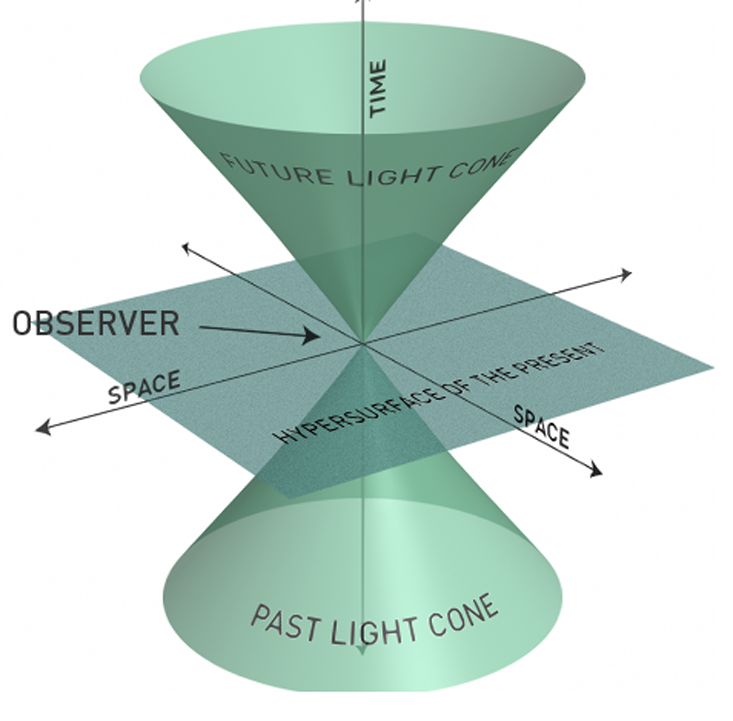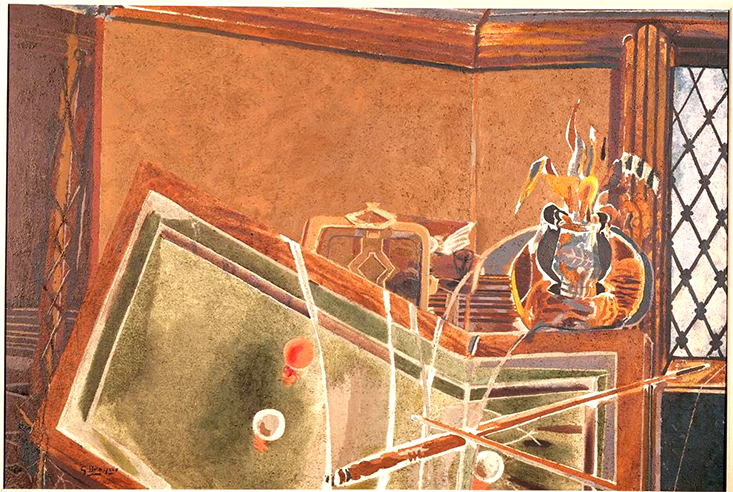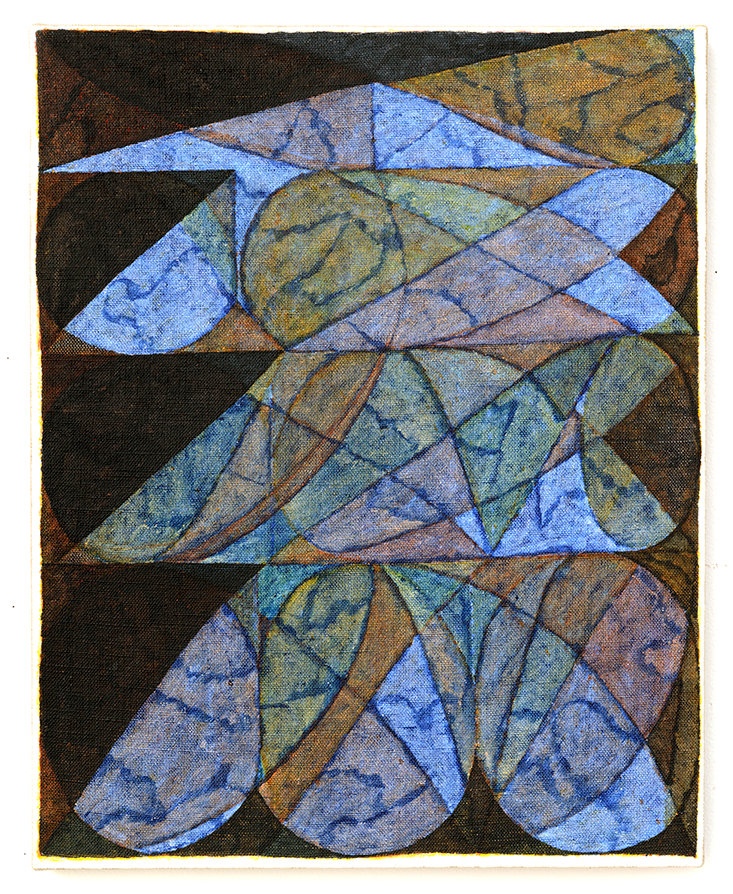This article is part of Nautilus’ month-long exploration of the science and art of time. Read the introduction here.
I recently came across this diagram of time and space:

It puts the observer at the intersection of two converging cones of light, one representing the past and the other the future. Physicists use the diagram to think about relativity and spacetime, and to decide whether two events or objects can ever have interacted (they can’t if they’re not in each other’s cone).
The diagram also reminds me of the experience of making a painting. I stand at a point in front of the easel. The past meets the present on the tip of my brush, and I glimpse a visual world that seems to be arriving from a future that is just out of sight. I’m not unique in this mindset: Painters have been expressing their unique perspectives on the subject of time for as long as handmade pictures have existed.

Egyptian tomb paintings remind us of a people who believed that images marked a point of contact between men and gods. Five thousand years later, Marcel Duchamp’s Nude Descending a Staircase reflected the growing popularity of a new technology, the motion picture camera, which captured movement as a series of individual impressions. Separated by millennia, these pieces of art helped the viewer reimagine time and even escape from it.
Before Duchamp, there was Paul Cezanne. As a young art student, Cezanne’s work was a revelation to me. He created a fundamental contradiction: illusionistic images that also reminded the viewer that paintings are just marks on a flat surface. In this way, he lifted the curtain on painting. I see apples in his 1893 painting Basket of Apples, but on a deeper look, I also see a physical and self-reflexive document that records its own process of becoming. When I tap into the rhythm of a Cezanne painting, I witness how discreet decisions connect through time like the notes in a melody. Brush mark by brush mark, a solid form is cast. What emerges is a living space, both fluid and fractured, that reflects how humans actually experience the world.

Pablo Picasso and George Braque moved the conversation forward with their invention of Cubism, in which what I see, what I know, and what I can imagine are all of equal importance. Classical notions of representation co-exist with signs, symbols, and purely abstract visual elements. I have never stopped dreaming of playing a game of four-dimensional pool on one of Braque’s Billiard Tables, where the same form can be seen from multiple viewpoints at once and objects freely phase between being opaque and transparent. I have wondered if Cubism came about as a response to Einstein’s theory of relativity and its light cones and observers.

In my own paintings, I try to hold and release time for the viewer. Many of my works have no preconceived image or preliminary drawings. Instead, I just begin working directly on a canvas. Then by adjusting the composition, revising color, painting over, and course correcting, a painting begins to tighten its orbit around a subject. This process mirrors music composition, in which disparate notes are found, revised, and placed into sequence until they create a tension and resonance. I spend roughly equal amounts of time burying and excavating forms.

Zamboni meets the viewer in the present while translucent layers of paint emit echoes of the past, offering fractured glimpses seen through the prism of time. The completed painting is comprised of various fragments taken from and between these successive painted layers. I hope the viewer can see how the picture was constructed through a succession of decisions. Like many of my paintings, it uses a rudimentary and accessible visual vocabulary that hopefully entices the viewer to get involved and, if they stay awhile, to notice that the final image is haunted by earlier, essential decisions.
I pursue essential paradox in my paintings, too, which has its own unique unfolding in time. Some, for instance, are constructed primarily with geometric forms, but these rational elements effectively reveal my hand’s imperfections. Others begin on a grid whose predictable and regular divisions tend to deny illusionistic space, organic form, and the potential of narrative. But at some point during my painting process, spontaneity, revolt, defiance, and humor emerge.

In these ways, I am trying to convey my own experience of time, compressing multiple moments into a single painted square. This humble rectangle will in turn persist into the future, carrying its own past just like the physicist’s light cone.
Matt Phillips is a Brooklyn-based painter, a fellow of the MacDowell Colony, Yaddo, and AIR Serenbe, and a professor of art at FIT in New York City.






























